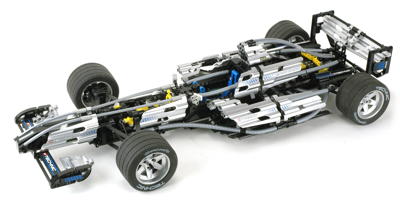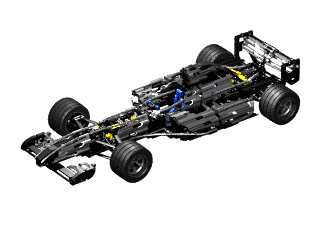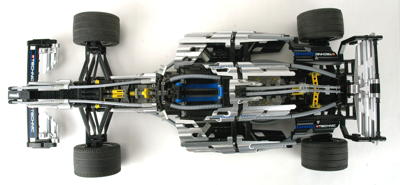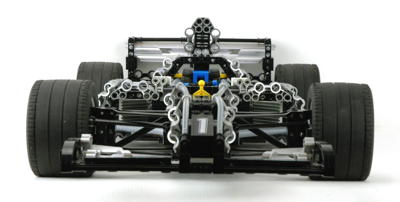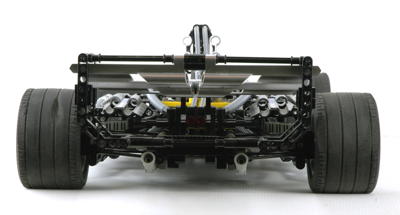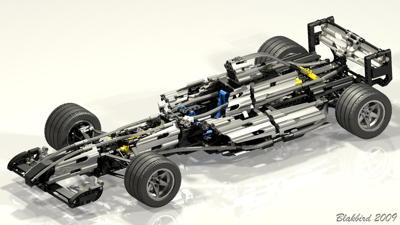Features
|
|
Steering
The front wheels can be steered using a wheel at the driver's
position. The steering wheel rotation passes through a u-joint and
then a set of spur gears. A standard rack and pinion system is
used which is connected to the steering hubs with 9L tie rods (new this
year). As can be seen, the steering hubs are quite large and
sturdy to support the weight of this huge model.
|
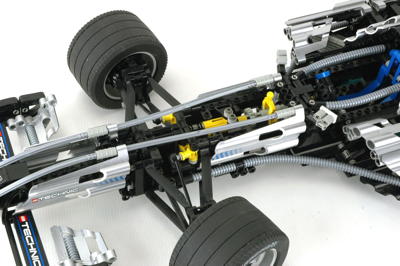
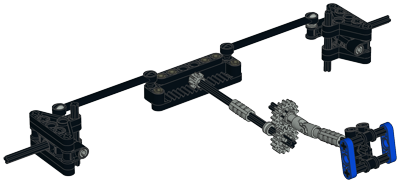
Click for an animation of the
steering in motion.
|
|
Engine
The rear wheels are used to drive a transparent V-10 engine. The
engine is made from cylindrical engine elements. The two
cylinder banks have a V angle of greater than 90º supported by the new
engine blocks. The
crankshaft is
offset 1/2 stud from center, giving the pistons a stroke of 1
stud. Each pair of pistons shares a common crank pin.
Because the crank pins are each offset 180 degrees, five pistons reach
top dead center at the same time. This can be seen clearly in the
animation.
In this particular model, the exhaust pipes are simulated with silver
ribbed hoses. There are actually 10 pipes, one for each cylinder!
This engine also has additional decorative elements representing the
intake manifold and runners. There are also radiators mounted to
the strakes on either side of the car. With this, the exhaust, and
the other engine details, the engine bay of this model is rather striking.
|
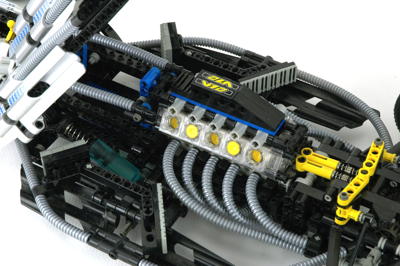 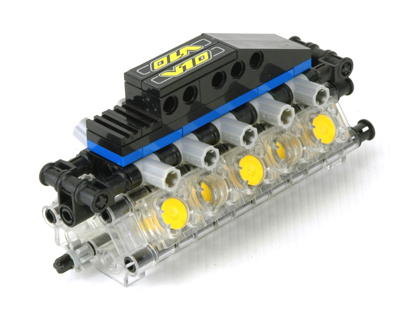
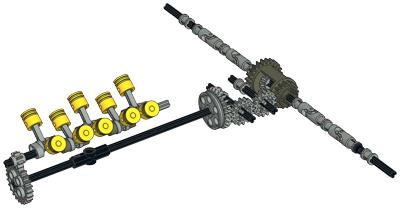
Click for an animation of the
engine in motion. |
|
Suspension
While other models had previously featured double wishbone suspension,
this is the first model to use real airfoil shaped wishbones and
pushrods. As can be seen in the images, there are six links on
each front wheel (5 on the rear). Four of these are the wishbone
parts used to form an equal length 4-bar linkage to support the wheel
hubs. There is a 9L tie rod used as a pushrod, and another one
used as a steering link. The rear setup is identical except for the omission of the steering link.
The pushrod suspension allows the springs to be located inside the body
away from the airstream for minimum wind resistance. True to its
name, the pushrod is only ever in compression. The slim wishbones
never support the weight of the car; they only space the wheel from the
chassis. The pushrod carries the whole weight to a crank arm which
then compresses a new stiff shock absorber. This puts a LOT of
stress on the yellow part used as a crank, but my original parts are
still undamaged so it appears to work well. The axles for the
crank arms are very firmly braced to support the large loads.
The setup on this model is an almost perfect representation of a real
Formula 1 pushrod suspension except for the orientation of the push link. It is rotated such that the airfoil is broadside to the airstream
which would be aerodynamically terrible.
The ride height of this car is very low. The chassis bottoms out before the shocks reach their internal stops.
|
 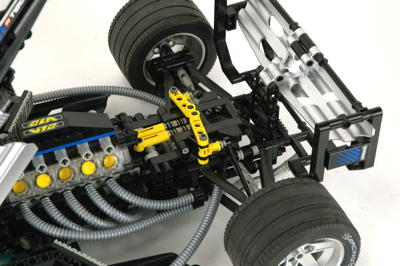
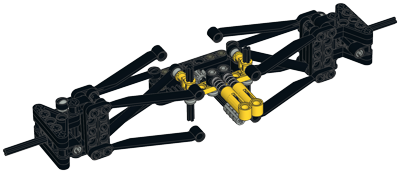 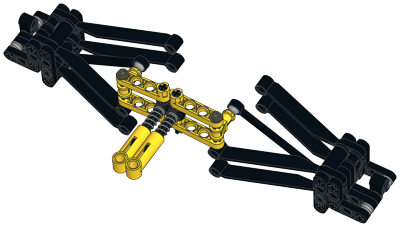
Click for an animation of the front suspension in motion.
Click for an animation of the rear suspension in motion. |
|
Differential
The rear axle uses a differential
gear which incorporates a built in 16 and 24 tooth ring gear. The
differential is made
to house 3 of the 12 tooth bevel gears. One is on each axle,
and one planet gear in the middle allows the axles to turn at different
rates. In this case, the smaller 16 tooth ring gear is used to
connect the differential to the engine driveline. U-joints are
used in the axles to allow the drive axles to follow the suspension movement.
|
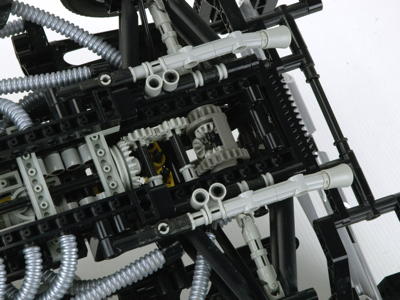 
Click for an animation of the
differential in motion. |
|
Engine Access
The whole back of the body cover can be raised for access to the
engine. This feature uses two of the spring loaded damper
elements. When in the down position, the damper is slightly over
center and therefore holds the cover down. A slight pull on the
yellow steering arm ahead of the driver pulls the dampers over center
and they then raise slowly,
getting slower as they approach the end of travel. The effect is
very realistic (except for the fact that real Formula 1 cars do not open
this way).
Despite the very large size of the cover, it is very light since it is
mostly empty space. 12 of the new metallic silver panels (and 2
black) are used in the cover alone.
| 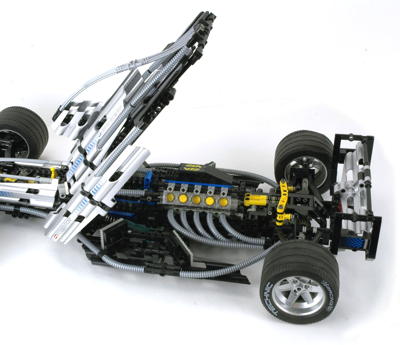 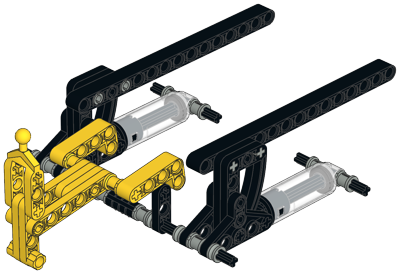
Click for an animation of the engine cover in motion. |
|
Wheels and Tires
This set has 4 of the 4 new giant metallic wheels and grooved tires,
reasonably accurate to Formula 1 at the time. Despite the
significant amount of space inside these deep wheels, the turning axis
of the steering is still slightly outside the wheel. This tires
include the "Technic Racing" logo which is unique to this model.
|
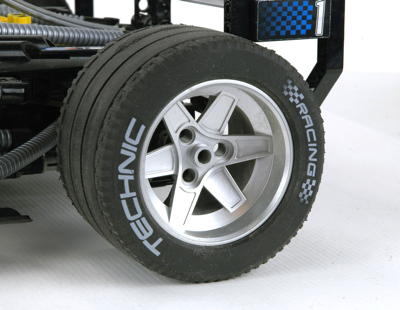
|

